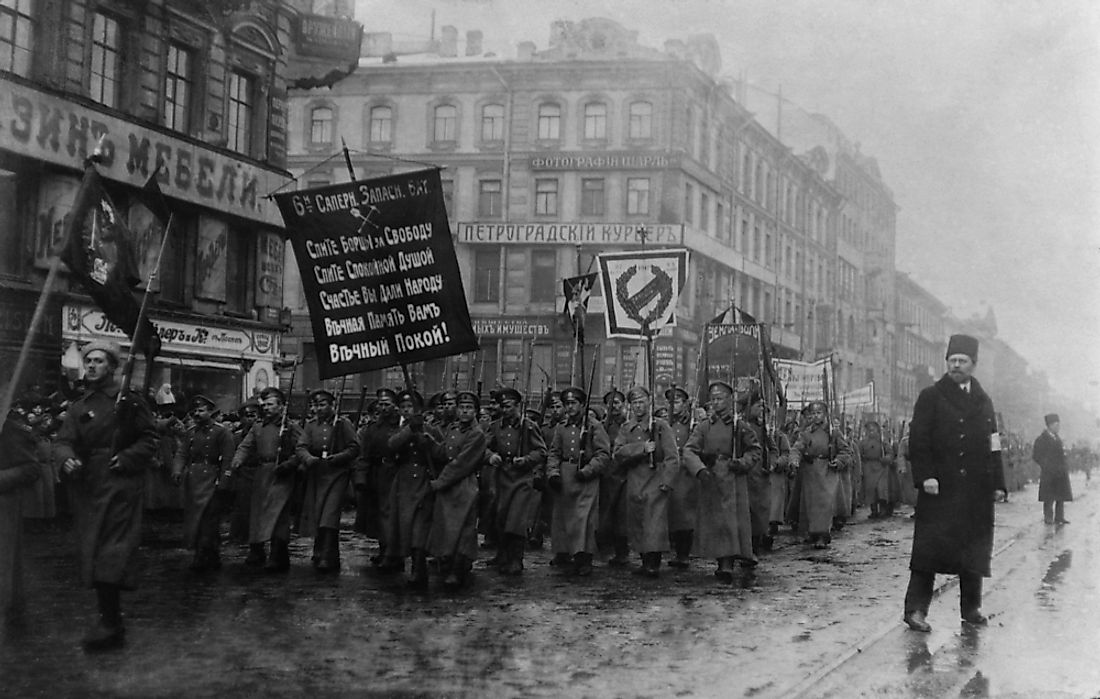What Was The February Revolution?

The February Revolution was one of the two revolutions which were witnessed in Russia in 1917. Most of the events took place near the present day St. Petersburg, which at the time was known as Petrograd. The city at the time was the capital of Russia, and the genesis of the revolution stemmed from the discontent against the monarchy on food rationing. The revolution began on February 23, 1917, according to the Julian calendar used at the time in Russia, which correspond to the March 7th in the present calendar (Gregorian calendar). The revolution finally led to the overthrow of the monarchy and was replaced by the provincial government, which was later in October overthrown by the Bolsheviks who established the communist party.
Before the Protest
At the time, Russia was facing a myriad of economic and social problems, which became even more profound at the start of the WW I in 1914. The Russian empire had been weakened by the economic crisis, military failure, and the general discontent from the public. The working class was demanding better working and living conditions, the peasants were demanding more land, and the oppressed wanted freedom. By 1917, most of Russians citizens had lost faith in the government, mainly because of corruption and particularly Tsar Nicholas II who had in numerous occasions disregarded the imperial Duma, the Lower House of the legislative assembly of the Russian Empire.
The Uprising
The protests took a new turn on February 17th, 1917, when the dissatisfied soldiers from Petrograd garrison joined the bread rioters who were protesting food shortages, and other industrial strikers in the streets. The first major protest took place on February 18 (March 3rd in the current calendar), when thousands of citizens marched to the streets to join the workers from Putilov factory, which was the largest plant in Petrograd. On February 23 (March 7th) more people who were celebrating the International Women’s Day joined the protestors to oppose the government in implementing food rationing. More and more people joined the protestors demanding the government to end food rationing, ending the autocracy, and ending the participation in WWI. On February 24th (March 9th) approximately 200,000 people flooded the street insisting on replacing the Tsar with a more progressive leader. By February 25th (March 10th), almost all enterprises in Petrograd had been shut down as a result of the uprising and almost all the citizens were on the streets, although the government had outlawed the protest. On March 2nd (March 15th), Tsar Nicholas II bowed to pressure and abdicated the throne and removed his son from succeeding him.
Effects of the Revolution
One of the major effects of the revolution was the abdication of the throne by the Tsar, and in its place, the provisional government was established becoming the new form of authority in Russia. At the same time, the Soviet Executive committee was formed, which was representing workers and soldiers. The provisional government, on the other hand, represented the upper and the middle social class. The provisional government also shared the same views with Kadet, which was a liberal political party made up of the moderate Republicans and constitutional monarchists. The Soviet got the support of the Mensheviks and the Social Revolutionists and resulted in the creation of “dual power.” In the next few months, there was political unrest, and the Bolsheviks seized power in October, which later became the Communist Party of the Soviet Union.











